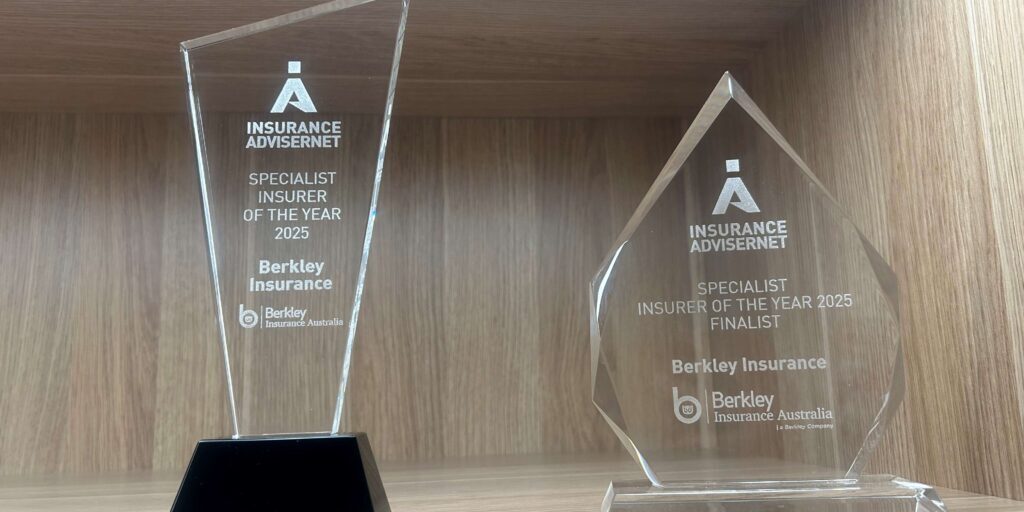
Change in Control Events
With corporate structures constantly evolving, particularly during periods of mergers, acquisitions or other significant transactions, its crucial for both businesses and insurance brokers to understand how these changes affect Directors and Officers (D&O) and Management Liability (ML) insurance. Communicating change of control events to insurers is a key first step in ensuring continued coverage for your client’s business, directors and officers.
First, let’s get back to basics. What is D&O and ML coverage?
D&O provides protection for the individual decision makers – or directors and officers – of a company against the costs associated with defending an action and damages awarded against them in relation to their personal liability for wrongful acts, mismanagement or negligence while performing their duties.
ML is a broader coverage that typically includes not just the directors and officers but the entire company and sometimes other employees. ML also includes coverage for other areas of the business such as employment practices liability, tax audit costs, fidelity and statutory liability.
What is a “Change in Control” event?
For the purpose of this article, a change in control (CoC) event refers to any significant change in the ownership or governance of a company. This can occur through:
- The sale of the company or a major portion of its shares
- A merger or acquisition
- Change in a majority of the board of directors
- Appointment of an administrator, receiver or liquidator (voluntary or involuntary)
These events alter the company’s risk profile, prompting the need for insurers to reassess coverage. The definition of what is a CoC event varies across D&O and ML wordings so it is important to understand the trigger contained in your client’s policy.
What happens to D&O and ML cover when there is a CoC event?
A CoC event typically places the policy into automatic run-off for the remainder of the policy period and limits cover under some sections of the policy to conduct occurring before the CoC event. This is especially relevant for ML as it is a broader scope coverage, and the impact of a CoC event could vary across different types of coverage within the same policy.
Extended run-off cover may be purchased from the insurer – typically up to a maximum of 84 months.
The impact of a CoC event on cover can vary from policy to policy, so it is important that you understand its effect on your client’s policy. We explain below some of the reasons why it is important to inform the insurer about CoC events.
Why it is Important to Communicate CoC Events:
Policy Triggers and Coverage Limitation
Many policies will only cover wrongful acts committed before the CoC event occurred. Once the CoC happens, any subsequent wrongful acts may fall outside the scope of the existing policy unless proper adjustments are made. Failing to disclose these changes could result in coverage gaps, leaving the company, directors and officers and their personal assets exposed.
Protection of Outgoing Directors
CoC clauses are in place to protect the personal assets of outgoing directors and officers. When a company undergoes a CoC, outgoing leaders need to ensure they remain protected from claims in connection with their time in office. Whilst the policy will likely be placed into automatic run-off for the remainder of the policy period, extended run-off coverage may be purchased past this point and will extend protection for claims relating to past actions taken prior to the CoC event, assisting in protecting your client from becoming financially liable for decisions made whilst they were in charge.
Review of Policy Terms
CoC events often require a re-evaluation of the existing policy terms. A new owner or management team may introduce new risks that weren’t previously considered. Brokers must work closely with clients to renegotiate coverage limits, terms and premiums based on the company’s evolving risk.
Automatic extended discovery or reporting periods within many policies may offer temporary coverage post-transaction and will usually run to the end of the policy period – but further run-off cover is necessary for longer-term protection. This extended run-off policy period will need to be negotiated with the insurer who may offer an additional term of run-off coverage up to a period of 84 months.
Although run-off is usually the responsibility of the company being acquired, the new company or person taking over control may have an interest in making sure this policy is in place due to the risk of future claims arising from past actions taken prior to the CoC event. Business sale agreements may exclude past liabilities and may also include a requirement that the old company purchase run-off cover.
Risk of Future Claims
After a CoC event, claims can arise due to decisions or actions taken by former directors or officers. Examples include situations where new owners claim they were misled during the acquisition about the company’s finances or product defects.
Best Practice for Insurance Brokers:
Early Engagement
Brokers should engage with their clients at the earliest sign of a potential CoC event. The sooner insurers are informed about a CoC event, the better prepared all parties will be to address any insurance coverage gaps and be informed regarding any additional costs involved for extended run-off coverage
Highlighting Key Policy Clauses
It’s essential that brokers draw their client’s attention to the CoC and run-off clauses in their D&O and ML policies from the start of the policy as these can vary between insurers These clauses detail if there are any specific obligations for notifying the insurer about CoC events and outline how the policy coverage may be affected once a CoC event has occurred. Some of the questions you should be asking and answering are set out in the table below.
| Category | Questions |
| Definition of CoC | How is “Change of Control” defined in my client’s policy? |
| Post CoC Cover | Does the policy automatically convert to run-off after a CoC event? |
| How long is the automatic run-off cover period? What extended or multi-year run off options is the insurer prepared to offer? | |
| Scope of run-off | Does run-off cover respond to wrongful acts before the CoC? |
| Are all insured persons included in the run-off cover? | |
| What key areas of liability are excluded when the policy is in run-off? | |
| Notification Requirements | Is my client required to notify the insurer about a CoC? If so, when does this notice need to be given? |
| Claims before CoC? | Are existing claims or known circumstances that occurred before the CoC covered? |
| Are acts occurring before the CoC but discovered after the CoC covered when the policy is in run-off? | |
| Post CoC Limitations | Are there exclusions that limit cover after the CoC? |
| Are outgoing directors protected from claims by new owners or management? | |
| Consequences of no Run-off Cover | Will the policy lapse or leave cover gaps for past acts? |
| Does my client’s policy have an automatic extended reporting period? How is it activated? |
Run-Off Cover
Advising clients on extended run-off cover is crucial. Proceedings for a declaration of contravention or a compensation order in relation to a breach of directors’ duties must be started not later than six years after the contravention. However, the precise timing of a contravention can be contentious where it is characterised by a continuing course of conduct. The option and importance of extended or multi-year run-off cover should always be discussed with your client in the lead up to the expiry of their current run-off coverage.
Conclusion
Structural changes such as mergers, acquisitions or shifts in the composition of board control can introduce a range of new risks for a company and its leadership. By communicating CoC events to insurers, your client can protect themselves against insurance gaps. Brokers serve a critical role in advising clients through these transitions, ensuring suitable cover is in place to protect both current and outgoing directors and officers.
Don’t let your guard down when it comes to CoC events with your clients– they are potential minefields of adverse financial outcomes if not properly understood by all parties.
Related Articles
Employment Practices Liability Trends
Statutory Liability: Engineering Firm’s Success with Prompt Legal Support
Advancement of Costs and Emergency Defence Costs | Management Liability Extensions
Important Notice
Berkley Insurance Company (limited company incorporated in Delaware, USA) ABN 53 126 559 706 t/as Berkley Insurance Australia is an APRA authorised general insurer. Information provided is general only, intended for brokers and has been prepared without taking into account any person’s particular objectives, financial situation or needs. Insurance cover is subject to terms, conditions, limits, and exclusions. When making a decision to buy or continue to hold a product, you should review the relevant policy documents.
Share this post on
Inside Berkley Insurance Australia: An Interview with CEO Tony Wheatley
Berkley Insurance Australia Wins Specialist Insurer of the Year for Fourth Consecutive Year
Getting the Best Terms for Clients with Prior Claims


